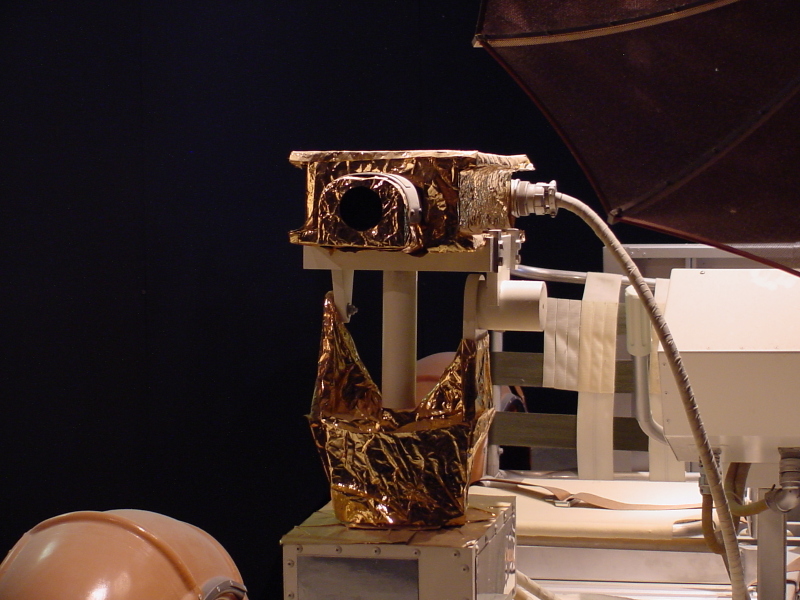| Prev |
heroicrelics.org Naval Aviation Museum Site Index LRV Mockup Gallery |
Next |
dsc09243.jpg
View of the mockup's television camera.
Picture 2 of 3.
The television camera could be used when the high gain antenna was pointed toward Earth, and could be remotely operated by ground controllers to monitor what the astronauts were doing and to identify any items of scientific interest which may not have been on the flight plan.
The TV camera famously televised the launch of the Apollo 17 Lunar Module ascent stage from the lunar surface. There were plans to capture the ascent of the Apollo 15 and Apollo 16 as well, but the camera's tilt motor burned out on Apollo 15 and the Apollo 16 astronauts parked the rover too close to the Lunar Module, so much of the ascent was missed.
Since there was a telecommunications delay of over 1.25 seconds between the Earth and the moon (radio waves only travel at the speed of light, and the moon was some 239,000 miles away), it would take over 2.5 seconds for someone on the Earth to adjust the camera based on the transmitted image he viewed, so Ed Fendell, the ground controller in charge of operating the camera, scripted the movements required to track the ascent stage's trajectory ahead of time. He began transmitting commands before the ascent stage was scheduled to take off, and had to watch the clock so he knew when to send the next command. Read more about this in Ed Fendell's oral history (description near the bottom of the page).

| Time picture taken | Sun Jun 12 14:56:33 2005 |
| Location picture taken |
Space Gallery Naval Aviation Museum Pensacola, FL |
| Prev |
heroicrelics.org Naval Aviation Museum Site Index LRV Mockup Gallery |
Next |